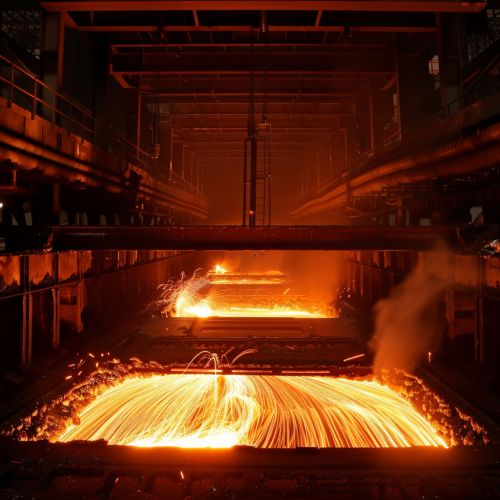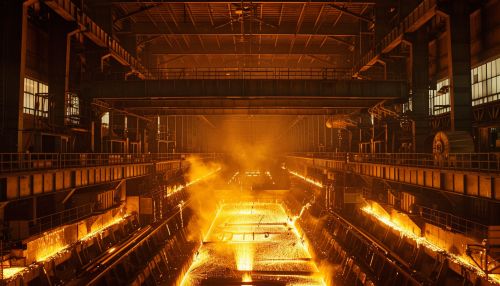Arc furnace
Introduction
An arc furnace is a high-temperature furnace that uses electrical arcs to melt metal. It is a type of electric furnace where heat is generated by an electric arc (or arcs) between carbon electrodes above the surface of the material (often metal) to be melted. It is among the oldest types of furnaces, having been introduced in the late 19th century, and is still widely used in many industries today.


History
The concept of the arc furnace dates back to Sir Humphry Davy's experiments in 1808, where he discovered the electric arc. However, it was not until the late 19th century when the first practical arc furnace was developed by Paul Héroult in France and Charles Martin Hall in the United States. Both inventors independently discovered the process of using an electric current to produce high temperatures for melting metals, which is now known as the Hall-Héroult process.
Design and Operation
An arc furnace is designed to use high-voltage electric arcs to generate heat. The furnace consists of a refractory-lined steel shell, which serves as the cathode, and three graphite electrodes, which serve as the anodes. These electrodes are lowered into the furnace, close to the metal charge. The electric current passes through the electrodes, creating an arc that reaches temperatures of up to 3,000 degrees Celsius. This intense heat is used to melt the metal charge.
The operation of an arc furnace is a complex process that requires precise control of the electrical input and the positioning of the electrodes. The furnace operator must carefully monitor the temperature and composition of the molten metal to ensure that it meets the desired specifications.
Applications
Arc furnaces are used in a variety of industrial applications. They are most commonly used in the production of steel, where they are used to melt scrap steel for recycling. Other applications include the production of ferroalloys, the melting of precious metals for refining, and the production of cast iron and other metals.
Advantages and Disadvantages
Arc furnaces offer several advantages over other types of furnaces. They are capable of melting a wide range of metals, they can be quickly started and stopped, and they are highly efficient. However, they also have some disadvantages. They require a large amount of electrical power, they can produce a significant amount of noise and dust, and they can be expensive to operate and maintain.
Future Developments
With the increasing demand for energy efficiency and environmental sustainability, there is ongoing research into improving the design and operation of arc furnaces. This includes the development of new electrode materials, the use of alternative energy sources, and the implementation of advanced control systems.
